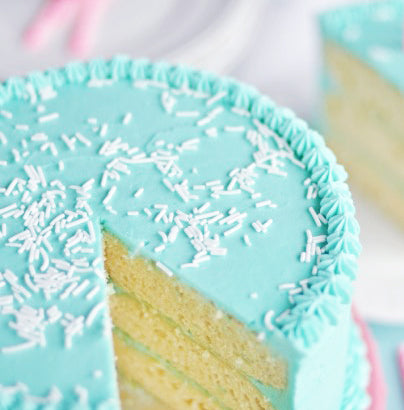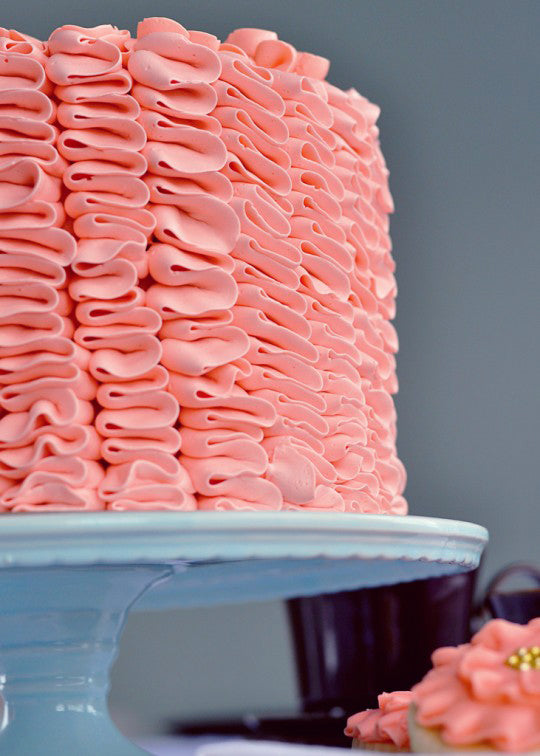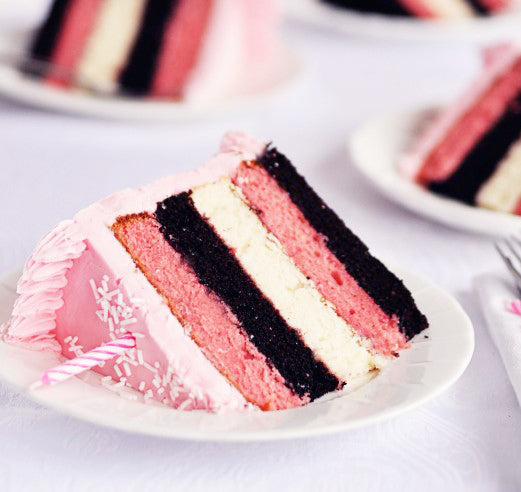 Happy American Thanksgiving! I was sitting here planning a bunch of upcoming baking posts, when I realized that we've never really chatted about some of the basic steps that make for consistent baking and caking. I thought that it may be helpful to post these tips now, before we get too hot and heavy into more cake recipes. This collection of tips and tricks is made up of suggestions that happen to work for me, that I have either learned from the pros, read in books, or figured out along the way (and am still learning). I can say that implementing these steps completely changed my life as a baker, and I thought it would be fun to share. I hope that even one of these tips will help you along too. Since it's a wordy post, I'll get right to it, but feel free to print this list off for reference. ♥ {print}
Happy American Thanksgiving! I was sitting here planning a bunch of upcoming baking posts, when I realized that we've never really chatted about some of the basic steps that make for consistent baking and caking. I thought that it may be helpful to post these tips now, before we get too hot and heavy into more cake recipes. This collection of tips and tricks is made up of suggestions that happen to work for me, that I have either learned from the pros, read in books, or figured out along the way (and am still learning). I can say that implementing these steps completely changed my life as a baker, and I thought it would be fun to share. I hope that even one of these tips will help you along too. Since it's a wordy post, I'll get right to it, but feel free to print this list off for reference. ♥ {print}
Recipe Ingredients:
1. Ingredients for cakes should be room temperature (can take out of refrigerator approximately 60-90 minutes before needed).
2. To check freshness of eggs, put in a bowl of water--if they sink, they're fresh. If they float and stand on one end, they're not.
3. "Eggs" typically means Grade A, large eggs.
4. "Milk" typically means homogenized.
5. You can substitute milk with yogurt or sour cream, to experiment with different textures.
6. To create a replacement for buttermilk, add 1 teaspoon vinegar for every cup of homogenized milk and stir.
7. Weighing ingredients with a digital kitchen scale is the most accurate method of baking.
8. 1 large egg white = 37 grams, 1 large egg yolk = 20 grams. Eggs separate best when cold, but whites whip best when room temperature or warm.
9. Egg whites in carton freeze well--just pull out of freezer night before you need them.
10. For best results, use pure vanilla extract (not from grocery stores)--what a difference! Heck, don't even be afraid to double the vanilla quantity.
11. To bring cold eggs to room temperature quickly, you can put the whole eggs into a bowl of lukewarm water (not hot) for 30 minutes.
12. To bring butter to room temperature quickly, you can cut into small cubes on a plate for about 15 minutes.
13. Semisweet Chocolate = Dark Chocolate. Bittersweet Chocolate = Extra Dark Chocolate.
14. Semisweet & Bittersweet Chocolate are interchangeable.
15. Unless otherwise listed, use unsalted butter for cake recipes.
Mixing:
16. Incorporate dry ingredients together with whisk before adding to wet ingredients.
17. When creaming butter and sugar, get the mixture very pale yellow and fluffy--will take several minutes (around 5).
18. Always start and end with dry ingredients when alternating with wet ingredients (3 dry additions, 2 wet).
19. Don't overmix once dry ingredients are added. Just mix on low speed until incorporated.
20. Kitchen stand-mixers don't need to run at full-speed. A small mixer should run no more than speed #4, for most things. A large mixer no more than speed #6. You will add years to your mixer's life!
21. Be careful with your sugar--too much can cause a dark crust (one of several possible causes), too little can cause too light a crust or tough texture.
22. Watch your flour--too much can cause a cracked top (one of several possible causes).
23. Beat egg yolks with fork before adding to batter.
24. To retrieve stray eggshells in mixture, use the emptied half-shell--eggshell sticks to eggshell. If you don't get them all, they will sink during baking, so you can turn baked cake over when cool and retrieve them.
25. A pinch of salt brings out the flavours in sweet baked goods.
26. When folding, you should always add the lighter of the two mixtures on top, using a gentle folding motion, to avoid deflating batter.
27. When mixing egg whites for meringue, wipe all untensils and bowl with vinegar or lemon juice on a paper towel before they come in contact with the egg whites (including the mixer whisk attachment). Any trace of grease, will likely jeopordize your meringue.
28. Keep an extra set of rubber spatulas that you use strictly for meringue.
29. Use the electric mixer's splashguard for liquidy batters--that's what it's for!
30. If incorporating more than one flavour into a batter or icing, always start with the vanilla; vanilla enhances most flavours.
Baking Cakes:
31. For evenly-baked cakes, no domed tops, and no-fuss assembly, bake "layer-by-layer." This means if you're baking a 3-layer cake, use 3 of the same size/shape pan, and bake 3 shorter layers at the same time.
32. Use a small offset palette knife to spread batter evenly in pans. Don't fill more than 1/2 full--2/3 at the most.
33. Get a separate oven thermometer for an accurate temperature reading--most ovens are either "hot" or "cold."
34. Always wait for oven to reach necessary temperature before putting cakes in oven.
35. Keep cakes away from sides of oven, and if possible a few inches from each other (when more than 1 baking at once).
36. Rotate cakes after 20 minutes in oven (don't disturb before 20 minutes).
37. Use middle rack, unless otherwise stated in recipe.
38. Typically, when in oven, cakes are nearing done when you can smell cake in the kitchen. Sounds weird, but you'll see!
39. Leave cakes in oven when testing for "doneness." When a skewer comes clean from center of cake, it's done.
40. Don't overbake! This is one sure way to end up with a dry cake.
Cooling & Frosting:
41. Let full cakes cool in pans on wire racks for 20 minutes before removing from pans.
42. Remove cupcakes from pan immediately, placing individual cupcakes on wire rack to cool.
43. Once completely cooled, wrap cake layers in plastic wrap and place in freezer for 30 minutes before cutting and/or icing.
44. Always place cake on a thin foil-covered cake board the same size/shape as the cake for ease of icing/serving, etc.
45. Brush away any stray cake crumbs with silicone pastry brush before icing.
46. Apply even layers of filling using an 18" pastry bag and large round tip.
47. Apply thin layer of icing to seal in crumbs, then place in refrigerator for 30 minutes before second layer of icing.
48. Use an offset palette knife/icing spatula for frosting top of cake, and straight palette knife/icing spatula for sides of cake. Use a bench scraper for super-smooth edges.
49. If you don't have time for frosting your cake, a good sprinkling of powdered sugar does wonders! Tastes and looks great on most cakes.
50. To give your frosted cake a glossy finish, you can use a hair-dryer on medium heat over the outside of the cake (right before serving).



